Now that the days are growing shorter, plants including lawn grasses slow their growth. Grass
will usually only need mowing every two weeks or so during the winter months. With this slower growth, automated irrigation
systems can be set to sprinkle every other week as well. Lawn grasses do not need fertilization during the winter months.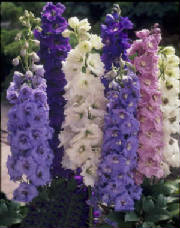
Blooming plants really shine during our winter months. Many of the flowers planted in the
spring up north can flourish all winter here. Petunias, snapdragons and pansies are all available now. Also consider
geraniums, begonias (especially the dragon wing with red flowers), and impatiens. If you can find plants of fox
glove and/or delphinium, they can add a tall punch to either large containers or the flower border. Blooming plants
should be fertilized at planting with a slow release fertilizers formulated for blooming plants. The long range forecast
is for a mild, dry winter, but if we do have the possibility of frost, remember that some of these flowers (impatiens and
geraniums especially) are tender and should be protected.
Some of the flowers that are
used as holiday decorations can be planted into the landscape after the holidays. I call Amaryllis the Florida
tulip. The bulbs will thrive 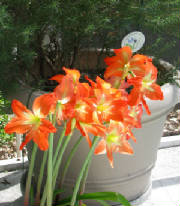 and multiply when planted in well drained soil in a site with morning sun and some dappled afternoon shade. Deer will
sometimes munch on the foliage, so you can keep them outside in large pots that can be protected. I also like using
pots because you can move them into prominence when they are in bloom. They will bloom around March or April every year.
For more information see the University
and multiply when planted in well drained soil in a site with morning sun and some dappled afternoon shade. Deer will
sometimes munch on the foliage, so you can keep them outside in large pots that can be protected. I also like using
pots because you can move them into prominence when they are in bloom. They will bloom around March or April every year.
For more information see the University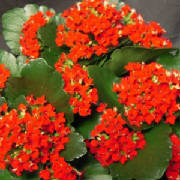 of Florida publication Amaryllis on the Internet at: http://edis.ifas.ufl.edu/pdffiles/EP/EP06000.pdf . Kalanchoe is perennial in our area and enjoys full sun and well drained soil. A rosemary topiary
tree planted in the landscape can become a small shrubby bush that will provide fresh rosemary for culinary uses year round.
Poinsettia can also be planted outdoors after the holidays. If you would like detailed information on poinsettia care
and how to get them to re-bloom, refer to the publication Poinsettias at a Glance on the Internet at: http://edis.ifas.ufl.edu/ep349.
of Florida publication Amaryllis on the Internet at: http://edis.ifas.ufl.edu/pdffiles/EP/EP06000.pdf . Kalanchoe is perennial in our area and enjoys full sun and well drained soil. A rosemary topiary
tree planted in the landscape can become a small shrubby bush that will provide fresh rosemary for culinary uses year round.
Poinsettia can also be planted outdoors after the holidays. If you would like detailed information on poinsettia care
and how to get them to re-bloom, refer to the publication Poinsettias at a Glance on the Internet at: http://edis.ifas.ufl.edu/ep349.
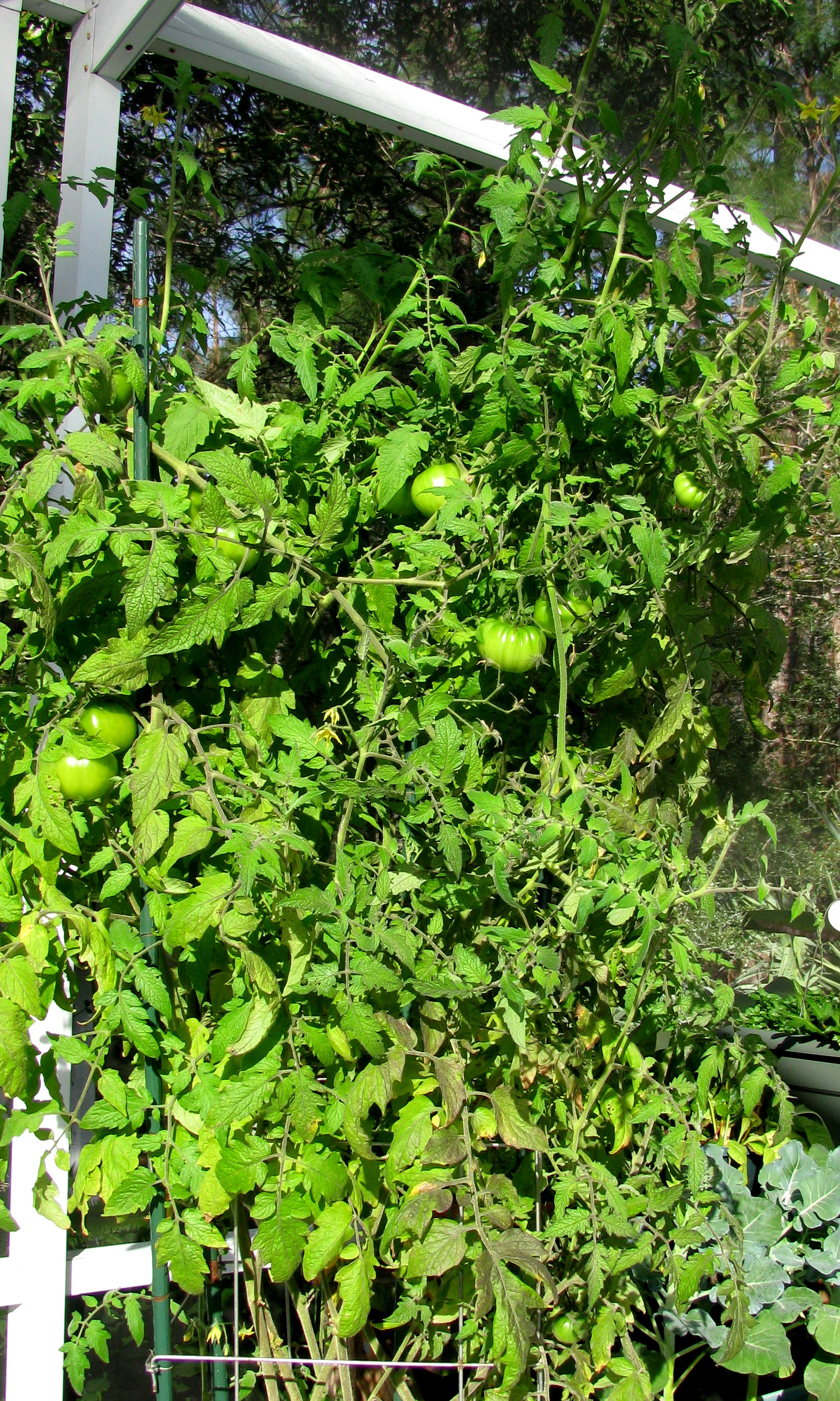 Many culinary herbs thrive in Florida's cool winter weather. Some to try are parsley, thyme, sage, dill, fennel, garlic chives,
rosemary, and coriander (cilantro). Herbs prefer well drained soil and not much fertilizer. Try growing them in
large pots close to the door near your kitchen so that they are always available when you are cooking. For more information,
access Herbs in the Florida Garden on the Internet at:
Many culinary herbs thrive in Florida's cool winter weather. Some to try are parsley, thyme, sage, dill, fennel, garlic chives,
rosemary, and coriander (cilantro). Herbs prefer well drained soil and not much fertilizer. Try growing them in
large pots close to the door near your kitchen so that they are always available when you are cooking. For more information,
access Herbs in the Florida Garden on the Internet at: 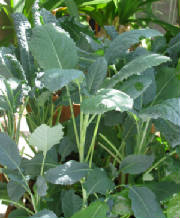 http://edis.ifas.ufl.edu/vh020.
http://edis.ifas.ufl.edu/vh020.
You still have time to grow some vegetables in pots this winter. I have
a tomato, Lacinato kale, broccoli plants, Swiss chard and some herbs growing on my pool deck inside the screen to protect
them from the deer. Consult the Florida Vegetable Gardening Guide (http://edis.ifas.ufl.edu/vh021) for planting dates and varieties suitable for our climate.
I can't believe how the fall has gotten away from me. I have been so remiss about posting to this
blog, and I appologize.
It is easy to forget that cold weather might soon be just around the corner and we might
not be prepared. Plan ahead for what protection measures you will take in your landscape if a frost or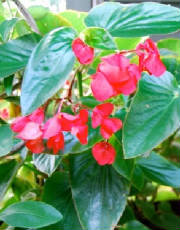 freeze is predicted.
freeze is predicted.
Some common plants which require protection in home landscapes are begonia
copperleaf, banana, papaya, poinsettia, hibiscus, impatiens, ixora, dwarf schefflera, croton, bougainvillea, allamanda, seagrape,
bromeliads, tropical fruit trees or any other tropical or semi-tropical plant you have planted. Orchids should be brought
into the house or garage for protection.
Covers offer the most practical cold protection
for prized plants. Old sheets, blankets, boxes, newspaper or plastic can be used for covers. When using plastic, build a frame
over the plant so that the plastic does not touch the plant's foliage. Any covering should continue to the ground. This will
trap heat rising from the ground and keep the interior three to four degrees warmer than the outside air. Apply the cover
late in the afternoon while the soil is at the warmest and before the temperature starts to drop.
Plastic covers
should be removed the next morning after the temperature is above freezing but before the sun's rays become warm enough to
cook your plants. Cloth or paper coverings can remain over plants for two or three days if temperature is expected to go below
freezing each night. Additional information can be obtained by accessing the University of Florida/IFAS publication Cold Protection
of Ornamental Plants on the Internet at http://edis.ifas.ufl.edu/MG025.
The most crucial tip for keeping Holiday plants looking good through the holidays is proper watering. Make
sure that the pot containing the plant has bottom drainage holes. Plants in small containers can dry out quickly, so you should
check them daily. Put your finger in the soil, if the top inch is dry it is time to water. Over watering is just as bad is under watering.
Plants do not like to sit in water. If they come in a decorative foil or plastic wrapper covering the pot, take it off or
punch holes in it, then water and let pots drain well before placing on a water proof container to protect your table tops.
Put your finger in the soil, if the top inch is dry it is time to water. Over watering is just as bad is under watering.
Plants do not like to sit in water. If they come in a decorative foil or plastic wrapper covering the pot, take it off or
punch holes in it, then water and let pots drain well before placing on a water proof container to protect your table tops.
Keep blooming plants in cooler temperatures to preserve the blooms longer. Place them in
areas with high levels of bright light but no direct sun. Also, keep them out of drafts; either cold from a door or in front
of air-conditioning or heating vents.
Winter and spring annuals make a colorful addition
to the winter landscape. Pansies, petunias, sweet alyssum, snapdragons and  pinks are a few nice ones to use as bedding plants or in baskets and containers. All of these will survive frosts or
freezes and keep on blooming. Other annuals that are a bit more sensitive to frost, but good to plant now are impatiens, geranium,
and begonias. Remember, impatiens are deer candy, so they are best kept in containers out of the reach of deer. To keep all
of these plants blooming into spring, provide a light application of slow release fertilizer every two months.
pinks are a few nice ones to use as bedding plants or in baskets and containers. All of these will survive frosts or
freezes and keep on blooming. Other annuals that are a bit more sensitive to frost, but good to plant now are impatiens, geranium,
and begonias. Remember, impatiens are deer candy, so they are best kept in containers out of the reach of deer. To keep all
of these plants blooming into spring, provide a light application of slow release fertilizer every two months.
Growth of lawn grasses has slowed so mowing and watering can be reduced to about every two weeks until the
weather warms in the spring. Lawns do not need to be fertilized during the winter months.
This is an excellent time to plant several different varieties of Herbs. Even if you don't have space in the ground, herbs can successfully be grown in containers. Some even do well indoors
on a sunny window sill. Some cool season herbs are sage, dill, cilantro, anise, sweet marjoram, thyme, lavender, rosemary,
sweet fennel, and chives. Herbs do best in well drained soil with a minimum of fertilizer.
Herbs. Even if you don't have space in the ground, herbs can successfully be grown in containers. Some even do well indoors
on a sunny window sill. Some cool season herbs are sage, dill, cilantro, anise, sweet marjoram, thyme, lavender, rosemary,
sweet fennel, and chives. Herbs do best in well drained soil with a minimum of fertilizer.
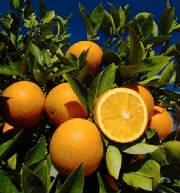 Citrus fruit must be fully ripe when harvested since the sweetening process stops once the fruit is picked. Many varieties
of citrus have a long season in which they can be left on the tree and gathered for use as needed, usually about three months.
If fruit is left on the tree too long the quality will decline as the fruit dries out.
Citrus fruit must be fully ripe when harvested since the sweetening process stops once the fruit is picked. Many varieties
of citrus have a long season in which they can be left on the tree and gathered for use as needed, usually about three months.
If fruit is left on the tree too long the quality will decline as the fruit dries out.

